《THE CHEMISTRY OF HETEROCYCLIC COMPOUNDS》
| 作者 | R·M·ACHESON 编者 |
|---|---|
| 出版 | INTERCSIENCE PUBLISHERS INC |
| 参考页数 | 409 |
| 出版时间 | 没有确切时间的资料 目录预览 |
| ISBN号 | 无 — 求助条款 |
| PDF编号 | 811592548(仅供预览,未存储实际文件) |
| 求助格式 | 扫描PDF(若分多册发行,每次仅能受理1册) |
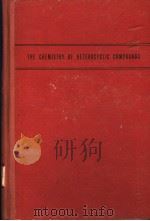
Nomenclature and Numbering System1
Ⅰ.Acridines9
1.Methods of preparation of Acridines9
A.Preparation of Acridines from Acridones or 9-Chloro-acridines9
B.The Bernthsen Reaction19
C.Preparation of Acridines from m-Phenylenediamines and Formic(or Oxalic Acid)25
D.Acridines and Acridans from Aromatic Amines and Alde-hydes and Similar Syntheses34
E.Cyclisstion of Diphenylamine-2-aldehydes and Ketones37
F.Other Methods of Preparing Acridines44
2.Acridine51
A.Historical Introduction and the Formulation of Acridine51
B.General Properties of Acridine54
C.Chemical Properties of Acridine56
3.Substituted Acridines59
A.Nitroacridines60
B.Halogen Substituted Acridines61
C.Acridine-N-oxides64
D.Hydroxyacridines65
E.Alkoxy and Aryloxyacridines66
F.Alkyl and Arylacridines68
G.Acridine Aldehydes and Ketones74
H.Cyanoacridines76
I.Acridine Carboxylic Acids77
Ⅱ.Aminoacridines79
1.Basic Strengths and Solution Properties79
2.1-,2-,3- and 4-Aminoacridines83
3.9-Aminoacridines85
A.Preparation85
B.Properties90
4.Synthesis and Properties of Atebrin(Quinacrine)94
5.Aminoalkyl and Aminoarylacridines97
6.Diamino and Triaminoacridines101
Ⅲ.Acridones105
1.Preparation of Acridones from Diphenylamine-2-carboxylic Acids105
A.Cyclisations with Phosphorus Oxychloride105
B.Cyclisations with Sulphuric Acid110
C.Cyclisations with other Reagents111
D.Alternative Cyclisations113
E.Cyclisation of N-Substituted Diphenylamine-2-carboxylic Acids117
F.Cyclisation Failures and Difficult Cyclisations118
G.Mechanism of the Cyclisation120
2.Preparation of Diphenylamine-2-carboxylic Acids148
A.The Ullmann Reaction148
B.Other Methods of Preparing Diphenylamine-2-carboxylic Acids161
3.Other Methods of Acridone Synthesis165
A.Rearrangement of Phenylanthranils to Acridones166
B.Oxidation of Acridines168
C.Miscellaneous Methods of Acridone Synthesis169
4.Synthesis of N-substituted Acridones170
5.Structure,Properties and Reactions of Acridone and Its Derivatives173
A.General Properties and Structure173
B.Chemical Properties of Acridone175
C.Substituted Acridones180
6.9(10)-Acridinethione and 9(10)-Acridineselenone192
A.9(10)-Acridinethione192
B.9(10)-Acridineselenone198
Ⅳ.The Acridine Alkalolds199
1.Alkaloids of Melicope fareana F.Muell199
A.Isolation199
B.General Properties,Structure and Synthesis of Melicopicine200
C.The nor Alkaloids203
D.Action of Alkali Metal Alkoxides on the Alkaloids207
E.Acid Degradation Products214
2.Alkaloids of Evodia xanthoxyloides F.Muell217
A.Isolation217
B.Evoxanthine219
C.Evoxanthidine and Xanthevodine221
D.Xanthoxoline222
3.Alkaloids of Acronychia Baueri Schott224
A.Isolation224
B.Acronycine225
4.Biosynthesis of the Alkaloids232
Ⅴ.Acridinium Salts and Reduced Acridines234
1.Acridinum Salts234
A.Methods of Preparation234
B.General Properties and Reactions237
2.Acridans249
A.Methods of Preparation249
B.Properties and Reactions of Aeridans257
3.More Highly Reduced Acridines262
A.Tetrahydroacridines262
B.Tetrahydroacridones271
C.Other Highly Reduced Acridines273
Ⅵ.Biacridines277
1.9,9'-Biacridines277
A.9,9'-Biacridine277
B.Δ9,9'-Biacridans278
C.10,10'-Dialkyl-9,9'-biacridinium Salts280
D.9,9'-Biacridans285
2.9,10'-Biacridines286
3.10,10'-Biacridines287
4.Some Stereochemical Considerations287
Ⅶ.Visible and Ultraviolet Absorption Spectra of Acridine and its Derivatives.&By L.E.ORGEL289
1.Acridine289
2.Aminoacridines290
3.Hydroxyacridines,Acridone and 9(10)-Acridinethione298
4.Acridans300
5.Theoretical Considerations303
6.Appendix:Infrared Absorption Spectra304
Ⅷ.Benzacridines,Condensed Acridines and Acridine Dyes307
1.Benzacridines and Condensed Acridines307
A.Benzacridines and Condensed Acridines with Four Rings307
B.Dibenzacridines and Condensed Acridines with Five Rings312
C.Condensed Acridines with Six or More Rings321
2.Acridine Dyes325
A.Simple Acridine Dyes325
B.Simple Acridone Dyes328
C.Complex Acridine and Aeridone Vat Dyes328
Ⅸ.Biologically Active Acridines339
1.General Historical Introduction339
2.Acridine Antibacterials340
A.Proflavine,or 3,6-Diaminoacridine341
B.Acriflavine,or 3,6-Diamino-10-methylacridinium Chloride344
C.9-Aminoacridine346
D.Other Acridines Used as Antibacterials348
E.Relation between Structure and Antibacterial Activity of Acridines350
F.Possible Mechanisms of the Antibacterial Action of Acridines and Related Topics358
3.Acridine Antimalarials362
A.The Malaria Cycle and the Screening of Potential Anti-malarials362
B.Acridine Antimalarials365
C.Atebrin,or Quinacrine373
D.Antimalarial Activity and Chemical Constitution of Acridines377
E.Mechanism of Action of Acridine Antimalarials and Related Topics380
4.Other Biologically Active Acridines382
A.Acridines and Cancer382
B.Miscellaneous Biological Data386
Index391
《THE CHEMISTRY OF HETEROCYCLIC COMPOUNDS》由于是年代较久的资料都绝版了,几乎不可能购买到实物。如果大家为了学习确实需要,可向博主求助其电子版PDF文件(由R·M·ACHESON INTERCSIENCE PUBLISHERS INC 出版的版本) 。对合法合规的求助,我会当即受理并将下载地址发送给你。
高度相关资料
-
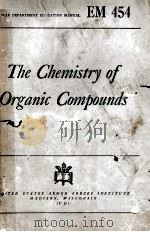
- THE CHEMISTRY OF ORGANIC COMPOUNDS
- 1944 THE MACMILLAN COMPANY
-
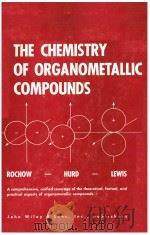
- THE CHEMISTRY OF ORGANOMETALLIC COMPOUNDS
- NEW YORK JOHN WILEY AND SONS INC
-
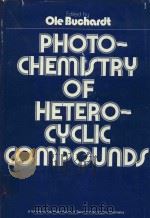
- PHOTOCHEMISTRY OF HETEROCYCLIC COMPOUNDS
- 1976 JOHN WILEY & SONS
-
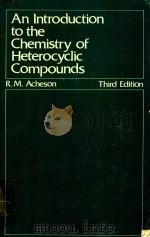
- AN INTRODUCTION TO THE CHEMISTRY OF HETEROCYCLIC COMPOUNDS THIRD EDITION
- 1976 A WILEY-INTERSCIENCE PUBLICATION
-
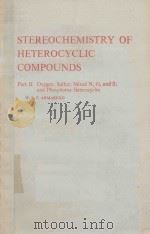
- STEREOCHEMISTRY OF HETEROCYCLIC COMPOUNDS
- 1977 JOHN WILEY % SONS
-
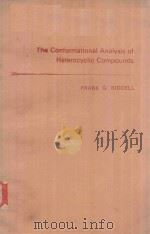
- THE CONFORMATIONAL ANALYSIS OF HETEROCYCLIC COMPOUNDS
- 1980 ACADEMIC PRESS
-
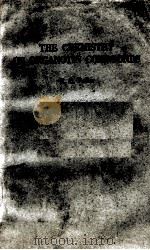
- THE CHEMISTRY OF ORGANOTIN COMPOUNDS
- 1970 LOGOS PRESS LIMITED
-
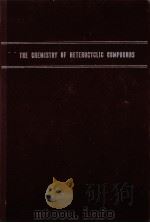
- THE CHEMISTRY OF HETEROCYCLIC COMPOUNDS:HETEROCYCLIC COMPOUNDS WITH THREE-AND FOUR-MEMBERED RINGS PA
- 1964 INTERSCIENCE PUBLISHERS
-
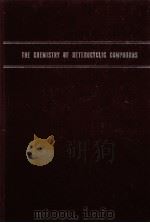
- THE CHEMISTRY OF HETEROCYCLIC COMPOUNDS:HETEROCYCLIC COMPOUNDS WITH THREE-AND FOUR-MEMBERED RINGS PA
- 1964 INTERSCIENCE PUBLISHERS
-
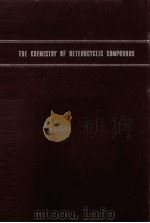
- THE CHEMISTRY OF HETEROCYCLIC COMPOUNDS:THE CYANINE DYES AND RELATED COMPOUNDS
- 1964 INTERSCIENCE PUBLISHERS
-
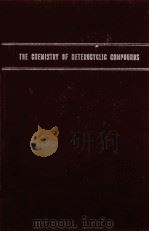
- THE CHEMISTRY OF HETEROCYCLIC COMPOUNDS:FIVE-AND SIX-MEMBERED COMPOUNDS WITH NITROGEN AND OXYGEN
- 1962 INTERSCIENCE PUBLISHERS
-
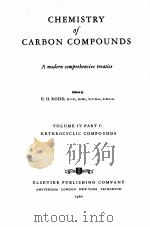
- CHEMISTRY OF CARBON COMPOUNDS VOLUME IV PART C HETEROCYCLIC COMPOUNDS
- 1960 ELSEVIER PUBLISHING COMPANY
-
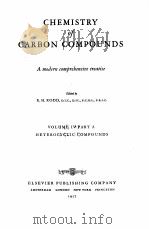
- CHEMISTRY OF CARBON COMPOUNDS VOLUME IV PART A HETEROCYCLIC COMPOUNDS
- 1957 ELSEVIER PUBLISHING COMPANY
-
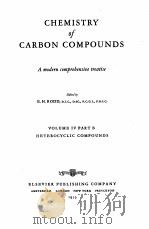
- CHEMISTRY OF CARBON COMPOUNDS VOLUME IV PART B HETEROCYCLIC COMPOUNDS
- 1959 ELSEVIER PUBLISHING COMPANY
提示:百度云已更名为百度网盘(百度盘),天翼云盘、微盘下载地址……暂未提供。➥ PDF文字可复制化或转WORD
